Patchouli cultivation guide – How to grow Patchouli Commercially for oil
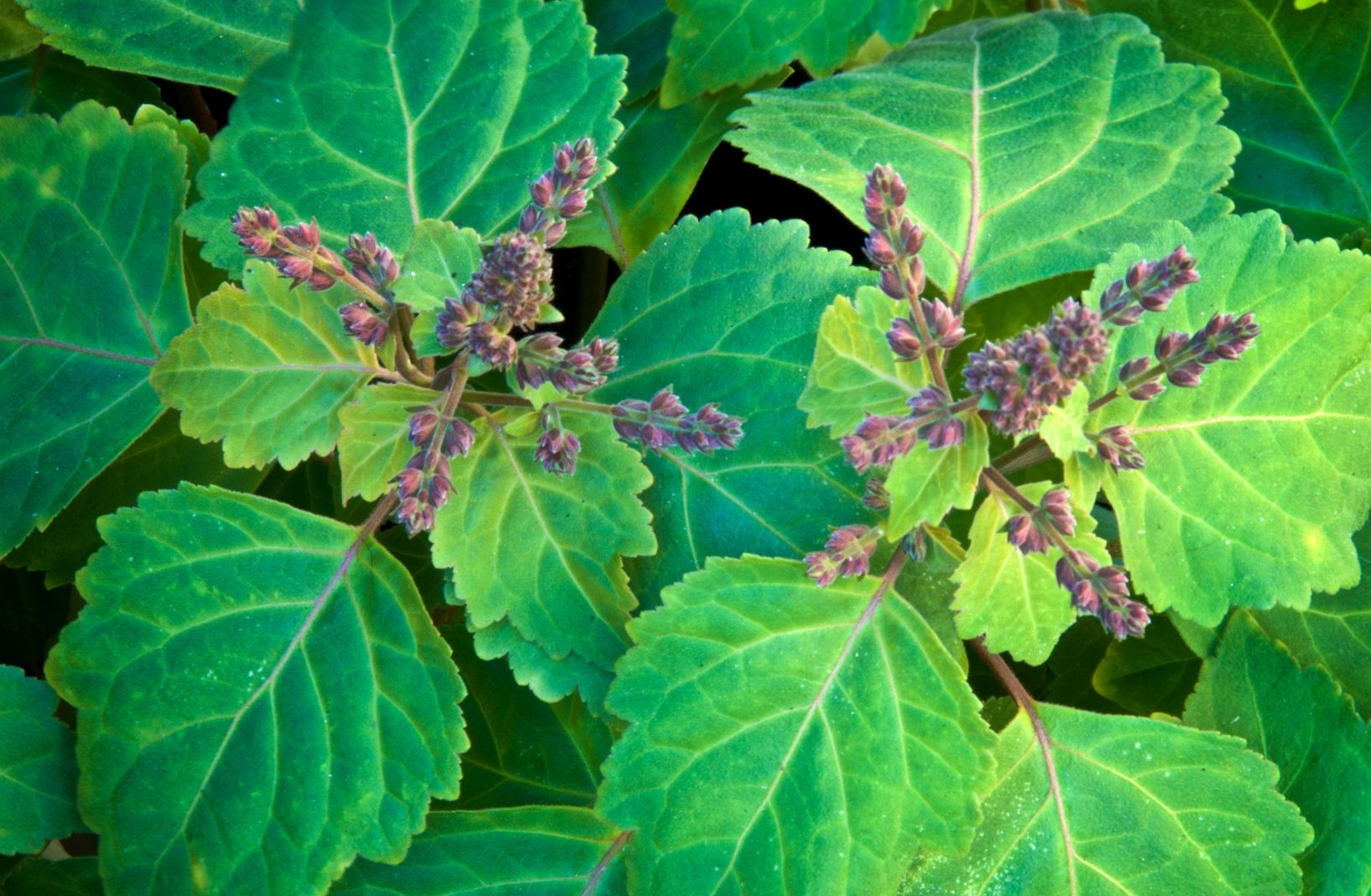
This post is also available in:
This post is also available in:
![]() हिन्दी (Hindi)
हिन्दी (Hindi)
How to grow Patchouli for Profit and Oil Production
Interesting information about Patchouli – The uses and importance of Patchouli
Patchouli belongs to the Lamiaceae family. The plant is native mainly to South East Asia. The Pogostemon genus has 40 species, out of which 20 are found in India (1). Pogostemon cablin is the scientific name of the patchouli species cultivated for its essential oil used extensively in the perfume and fragrance industries. Patchouli oil is an important component of several perfumes due to its fixative property and blends well with other essential oils. It is widely used to flavor foods, alcoholic drinks, non-alcoholic beverages, frozen foods, dairy products, desserts, candies, baked products, and meat products (2). Patchouli oil is known to possess anti-fungal properties and is used for skin infections, dandruff, and eczema. In aroma therapy, it is recognized for its anti-depressant, anti-inflammation, deodorant, and fungicidal properties.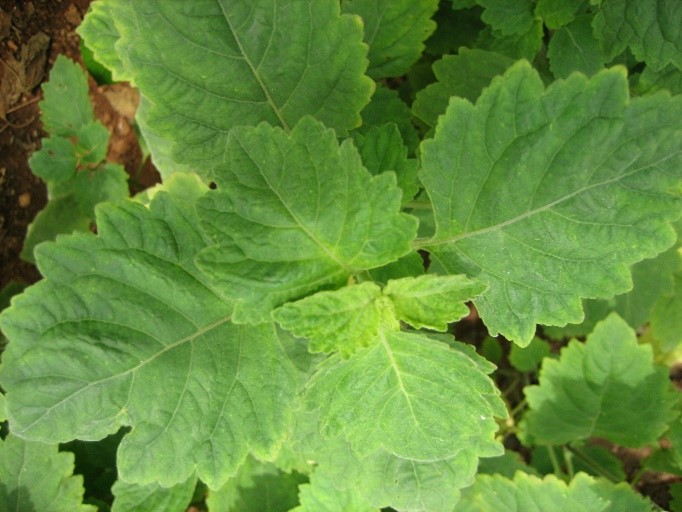
Patchouli Plant Information and Environmental Requirements
Patchouli is a herbaceous, perennial shrub with erect stems, large leaves and grows to a height of 0.5-1 m (1.6-3.3 feet). Patchouli is commercially cultivated in Indonesia, China, Brazil, Seychelles, West Indies, and to a small extent in India. Indonesia is the major producer of patchouli oil.
It can be grown under open or partially shaded conditions. Patchouli is known to perform well under 50% shade (3). It is suited as an intercrop in young orchards in agroforestry systems. Under open conditions and low rainfall areas, patchouli can be grown as a short-duration crop with 2-3 harvests. 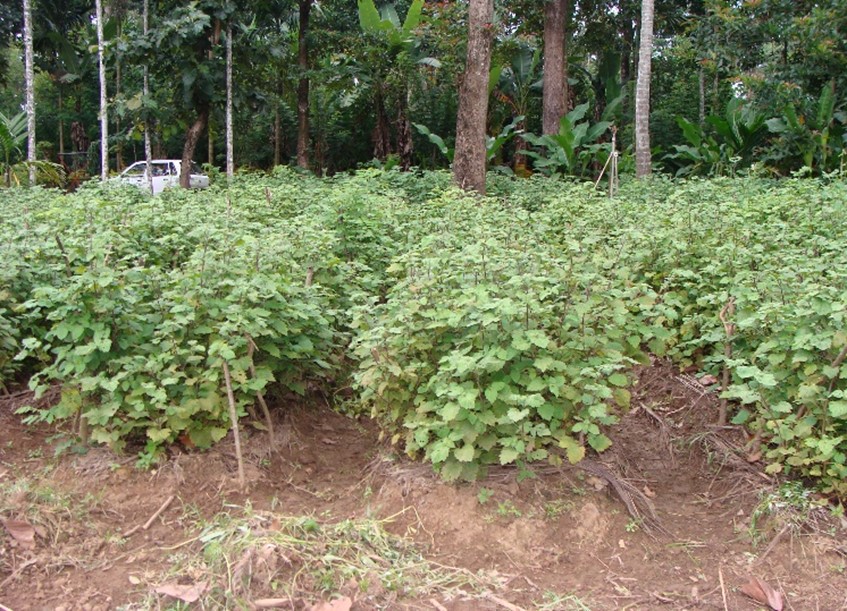
Patchouli plantation in partial shade
Agro-climatic conditions for Patchouli plant
Patchouli is best suited to tropical climates with well-distributed rainfall ranging from 1500-3000 mm; it can be cultivated with supplemental irrigations in low-rainfall regions. Relatively high average temperatures(25-35 °C or 77-95 °F) and high relative humidity are required for good growth of patchouli. Patchouli can be grown in a wide range of soil conditions. Light porous, well-drained soils rich in organic matter (pH 5.5-6.5) are better suited.
Planting Patchouli plants – Patchouli propagation – How to propagate patchouli with cuttings
Patchouli is planted during the rainy season; hot, sunny conditions should be avoided. Patchouli plants are propagated by rooted cutting raised in the nursery. The nursery is made in the shade, where 10-12 cm terminal cuttings are planted on raised beds or in polythene bags. A 200 m2 nursery area provides sufficient rooted plants for 1 ha (2.47 acres).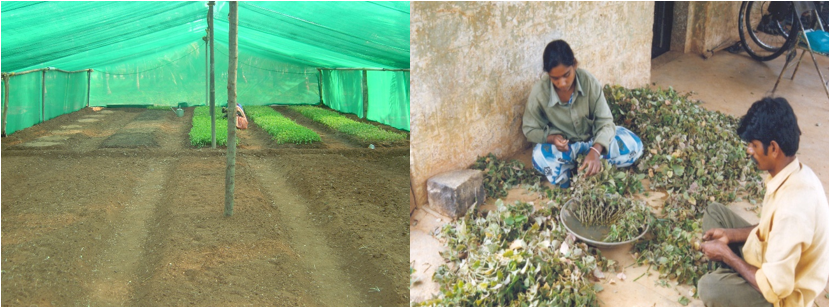
Patchouli nursey – Preparation of patchouli cuttings
Patchouli should be planted on raised beds or ridges. The main field is prepared with suitable raised beds with provisions for irrigation and drainage. Rooted cuttings of 40-45 days from the nursery are transplanted on the raised beds at a plant spacing of 45×45 cm (18×18 inches). Light irrigation is given soon after transplantation. Evenings are best suited for planting. As and when necessary, gap-filling should be done. 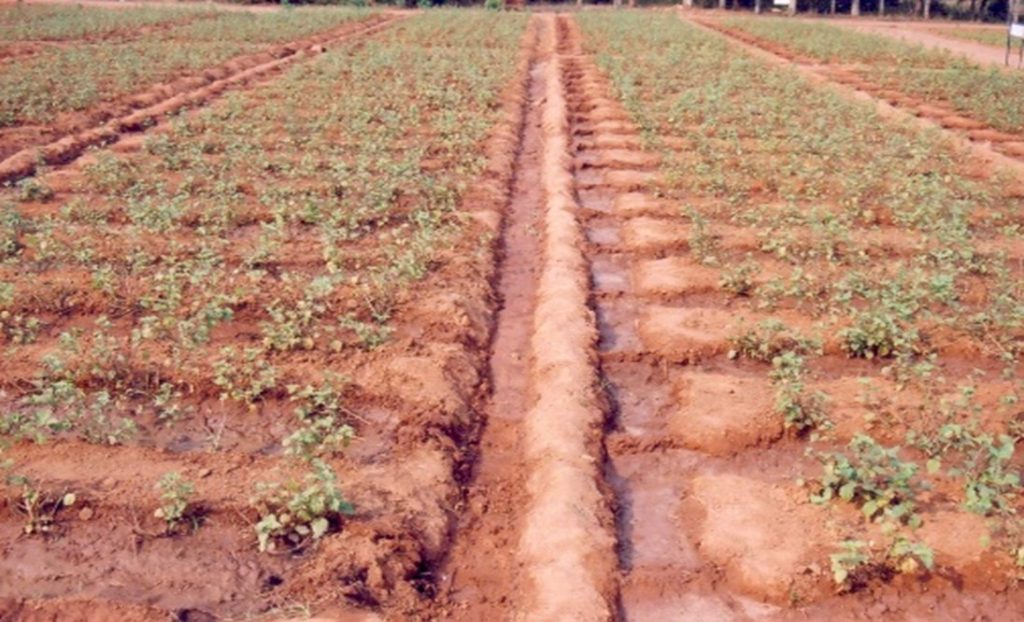
Main field with provisions of irrigation and drainage
Patchouli Nutritional Needs – Fertilization of Patchouli plants
It is important to test the soil for its nutrient status before planting your crop. The necessary amounts of fertilizers and manures should then be applied based on these results and the recommendation of an agronomist.
In soils of medium fertility, farmers are advised to apply 10 tons (4 tons per acre) of farmyard manure and chemical fertilizers to supply the crop annually with 100 kg of nitrogen, 50 kg of phosphorus, and potash per hectare (or 90 lb N, 45 lb of P and 45 lb of K per acre) (4). N is better to be applied in 3 equal monthly split doses, while all of P and K are applied basally. Based on soil analysis, any deficient secondary and micronutrients should be applied following the recommendations of an agronomist. Patchouli responds well to the symbiotic application of Vesicular Arbuscular Mycorrhizal (VAM) fungi (5). Application of 75% vermicompost and 25% NPK improves the patchouli yields without affecting the quality of patchouli alcohol (6).
Weeding a field with patchouli – Weed control in patchouli crop
The field should be weed-free in the initial stages to help the crop attain good growth. In the later stages, a fully grown crop competes well with the weeds, and intervention is not needed. Suitable herbicides can be used based on the advice of a local agronomist.
Irrigation of patchouli – Water need of patchouli plants
Light irrigation is required soon after planting. In non-rainy periods, weekly irrigations are given either by surface, sprinkler, or drip methods. Patchouli is very sensitive to water logging. Therefore, enough provision should be made for free drainage of excess water. In the ridge and furrow method of planting, alternate furrow irrigation saves nearly 50% water (7).
Mejor Pests and Diseases in patchouli – Patchouli plant protection
In Indonesia, there are two major diseases that can negatively affect patchouli plants:
- Budok (Ralstonia solanacearum) and
- Wilt caused by mycoplasma-like organisms.
Preventive measures such as proper-certified planting material, proper land preparation, pesticide applications (as suggested by an agronomist), and sanitation measures could help (8).
In India, the two most important diseases that a grower of patchouli may have to confront are:
- the wilt and
- leaf blight,
Both diseases can be controlled by applying suitable fungicides recommended by an agronomist (4).
Patchouli is susceptible to root-knot nematodes. Therefore, farmers should avoid cultivating patchouli in nematode-infested fields. Crop rotation with non-host plants can reduce the problem efficiently. 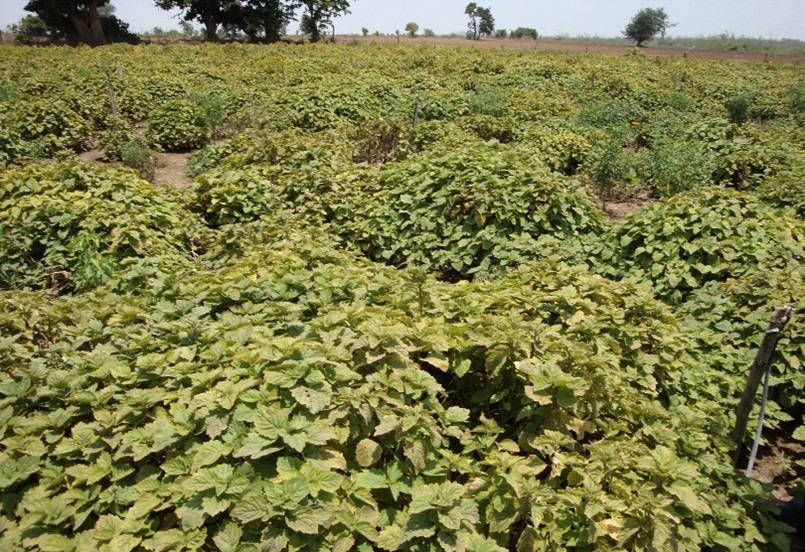
Patchouli crop under open conditions (open field)
Harvesting Patchouli
Harvesting is done when the crop turns from thick green to light greenish-yellow color. One can observe a mild patchouli fragrance when standing in the field at this stage. The first harvest is taken 4-5 months after planting; subsequent harvests are taken at 3 months intervals. Care should be taken to cut leaves and tender twigs, leaving out some leaves for crop regeneration. Patchouli plants are sensitive and delicate.
In tropical conditions with uneven rainfall and irrigation supply, 2 harvests of patchouli will result in the optimum performance of the crop. For this reason, they should be cut with sharp sickles or secateurs to avoid disturbing the root system. While harvesting, stem portions should be avoided to get 60-70% leaves for good oil recovery since the stem does not contain oil.
Patchouli Yield – How much does patchouli yields
A production of 15-25 tons per hectare (5.5-9 tons per acre) can be expected depending on the agronomic conditions. This yield is usually obtained from 2 harvests. Air-dried herb is used for distillation of patchouli. The air-dried yields could be 3-5 tons per hectare (1.1-2 tons per acre), which gives 60-100 kg of patchouli oil per hectare (90 lb per acre) in 2 harvests.
References
- Weiss, E.A. (1997). Essential Oil Crops. CAB International, NY, USA. pp. 138-154.
- Husain, Akhtar (1994). Essential Oil Plants and their Cultivation. Central Institute of Medicinal and Aromatic Plants, Lucknow, India p. 292.
- Prakasa Rao, E.V.S., R.S.Ganesha Rao, M. R. Narayana and S. Ramesh (1997). Influence of shade on yield and quality of patchouli (Pogostemon cablin) oil. Indian Perf. 41(4): 164-166.
- Prakasa Rao, E.V.S. (2014). Technology for the production of patchouli oil. Training programme on commercial cultivation of medicinal and aromatic plants. Central Institute of Medicinal and Aromatic Plants, Research Centre, Bengaluru, India.
- Arpana, J., Bhagyaraj, D.J., Prakasa Rao, E.V.S., Parameswaran, T.N., Abdul Rahiman, B., (2008). Symbiotic response of patchouli (Pogostemon cablin) to different arbuscular mycorrhizal fungi. Adv. Environ. Biol. 2 (1), 20–24.
- Singh, R., Singh, M., Srinivas, A., Prakasa Rao, E.V.S., Puttanna, K. (2015). Assessment of organic and inorganic fertilizers for growth, yield and essential oil quality of industrially important plant patchouli (Pogostemon cablin) (Blanco) Benth. Essent. Oil Bear. Pl. 18 (1), 1–10.
- Prakasa Rao, E.V.S., Gopinath, C.T., Rao, R.S.G. (1998). Alternate furrow irrigation for geranium (Pelargonium graveolens) and patchouli (Pogostemon cablin). Med. Aromat. Plant Sci. 20 (4), 1036–1037.
- Feri Agustian Soleh(2012). astiri-indonesia.org.
Further reading:
Patchouli cultivation guide – How to grow Patchouli Commercially for oil
Distillation of patchouli for essential oil – Patchouli essential oil extraction
Commercial Cultivation of Sweet Basil (Ocimum basilicum) for oil production


















